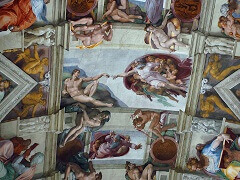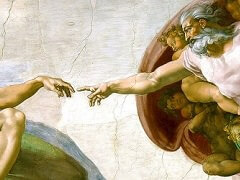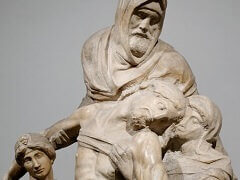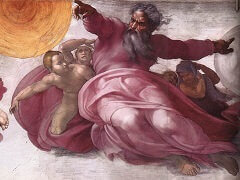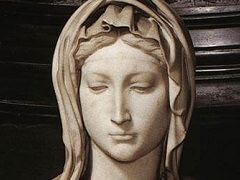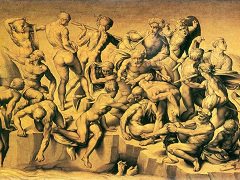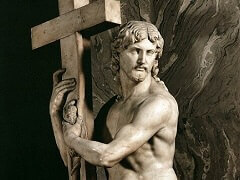Victory, by Michelangelo

It is uncertain whether the Victory statue was planned as part of the tomb of Julius II. The strong manneristic features (exaggerated contortions and complex movements) link this figure
to the Slaves, executed for the version of the tomb designed in 1532. The figure of the conquered barbarian fighter is unfinished.
In this work, Michelangelo opposes pride and disdain in victor and vanquished. Entirely self-confident, the victorious adolescent lays one arm along the length of his body-as he fetches a garment
to his shoulder while pressing a knee to the neck of the prisoner at his feet, as if in warning that he remains alert to engage at the first hint of attack. Compared to
St. George by Donatello viewers see a standoff between dignified low-key self-assurance and neurosis-driven
heroism. Some observers rightly find the statue incomplete and link it to a drawing of a winged adolescent at the Casa Buonarroti: if you mentally reconstitute the statue from that drawing, you see
that wings do round out the effect.
Victory is admirable for the almost excessive freedom of the pose: one leg stands upon the defeated opponent while an arm presses against the chest, the torso takes a violent, backward
twist to the left and the head turns right to present a profile, and suggests a longer, stronger right shoulder.


